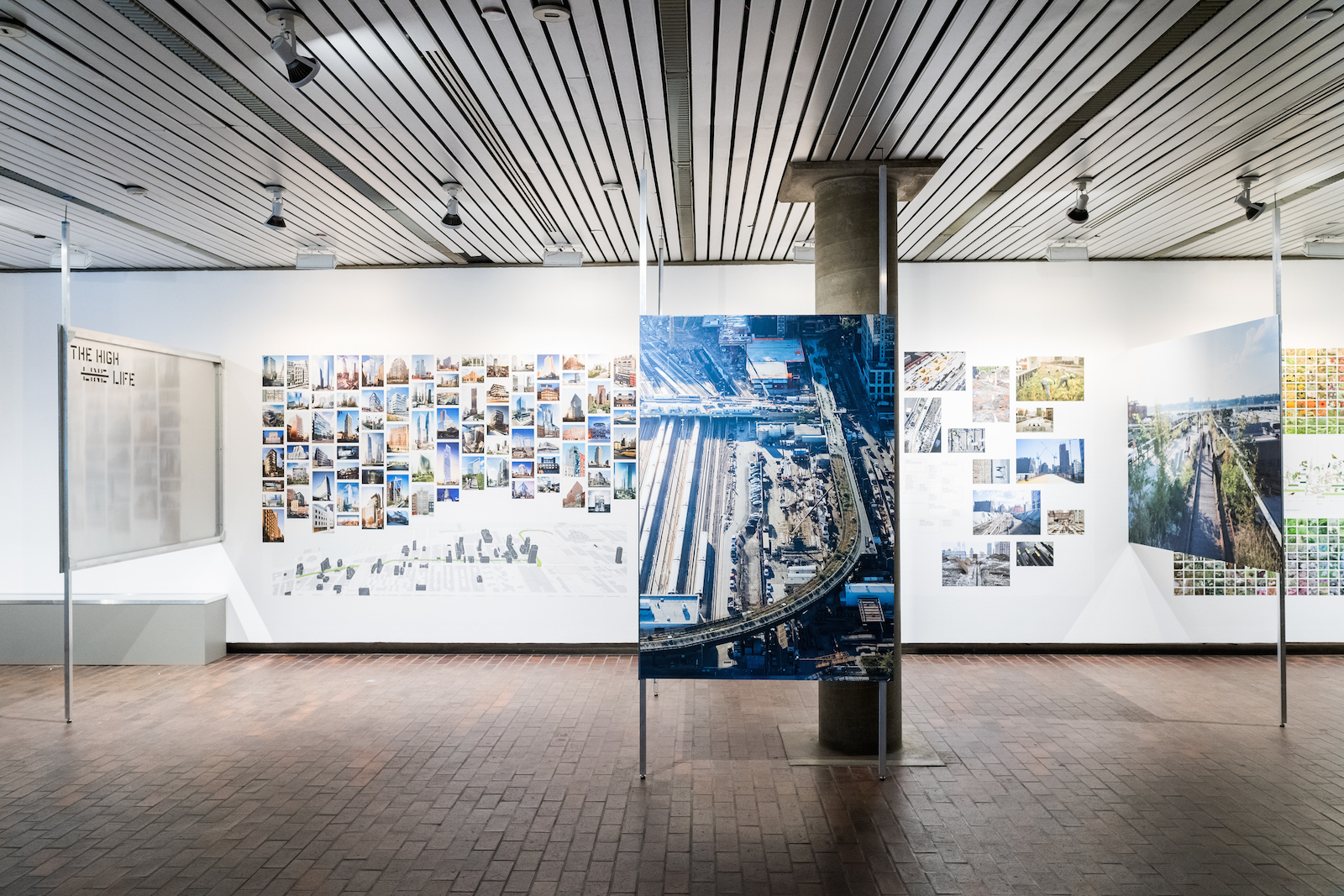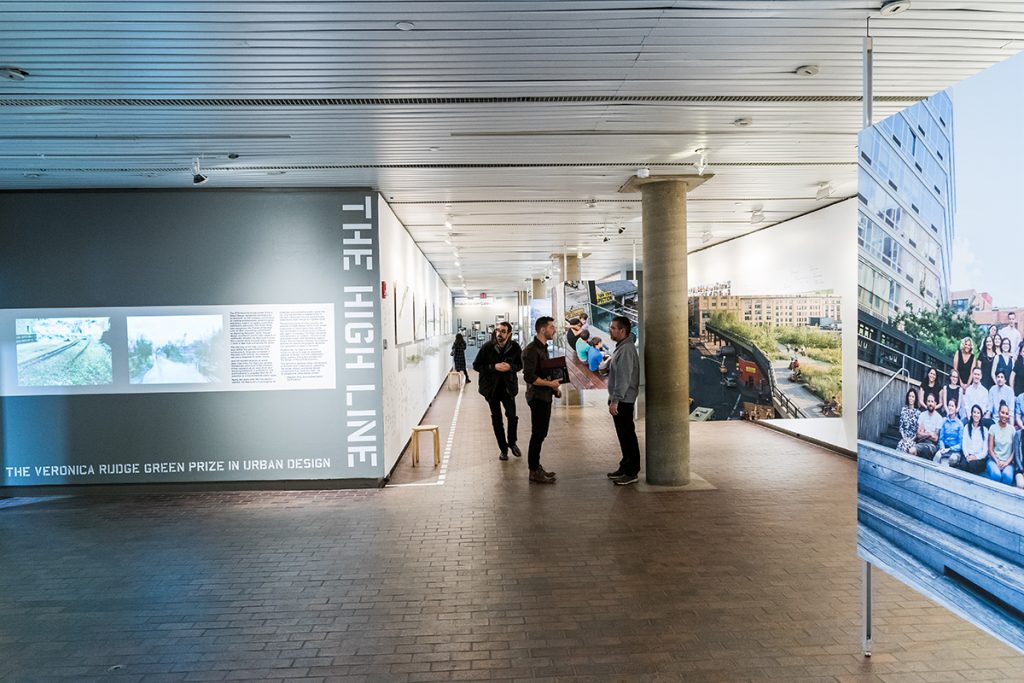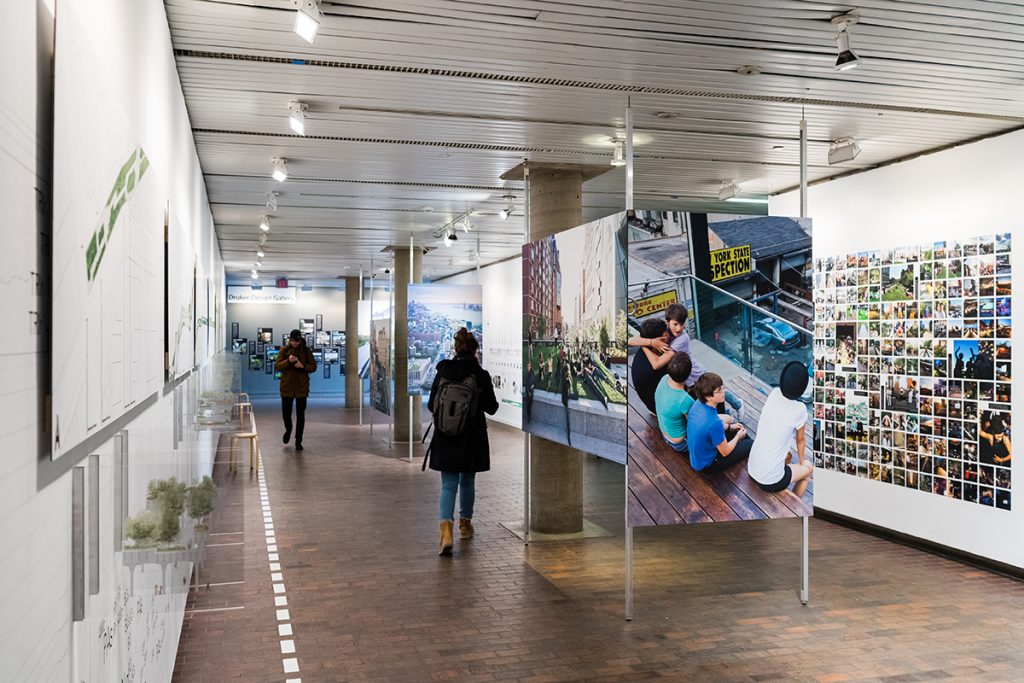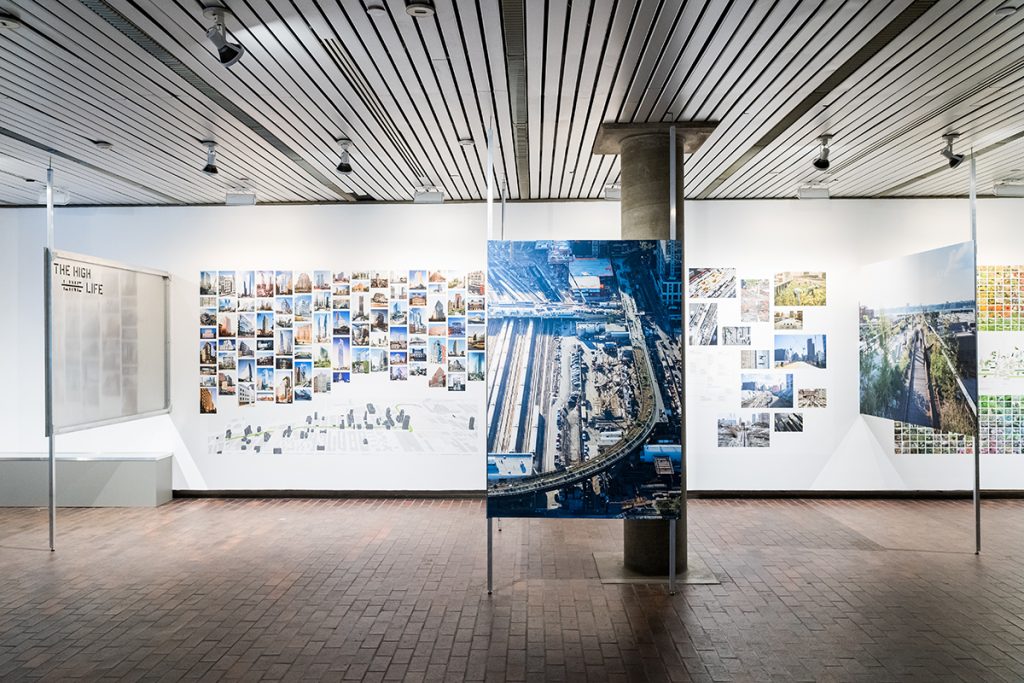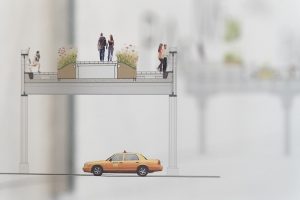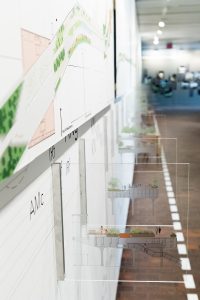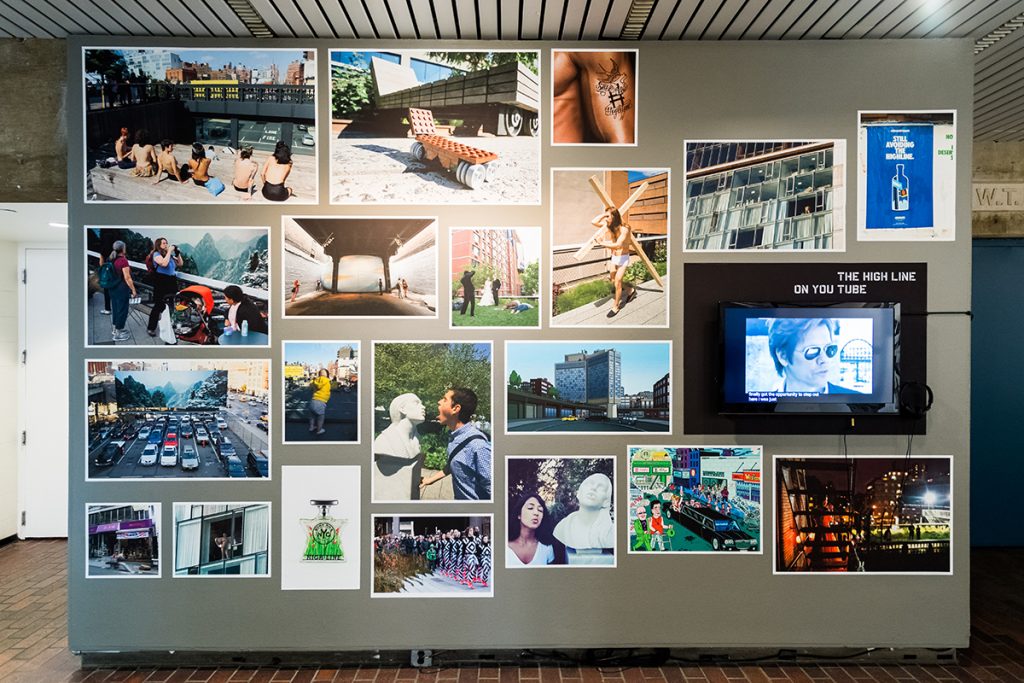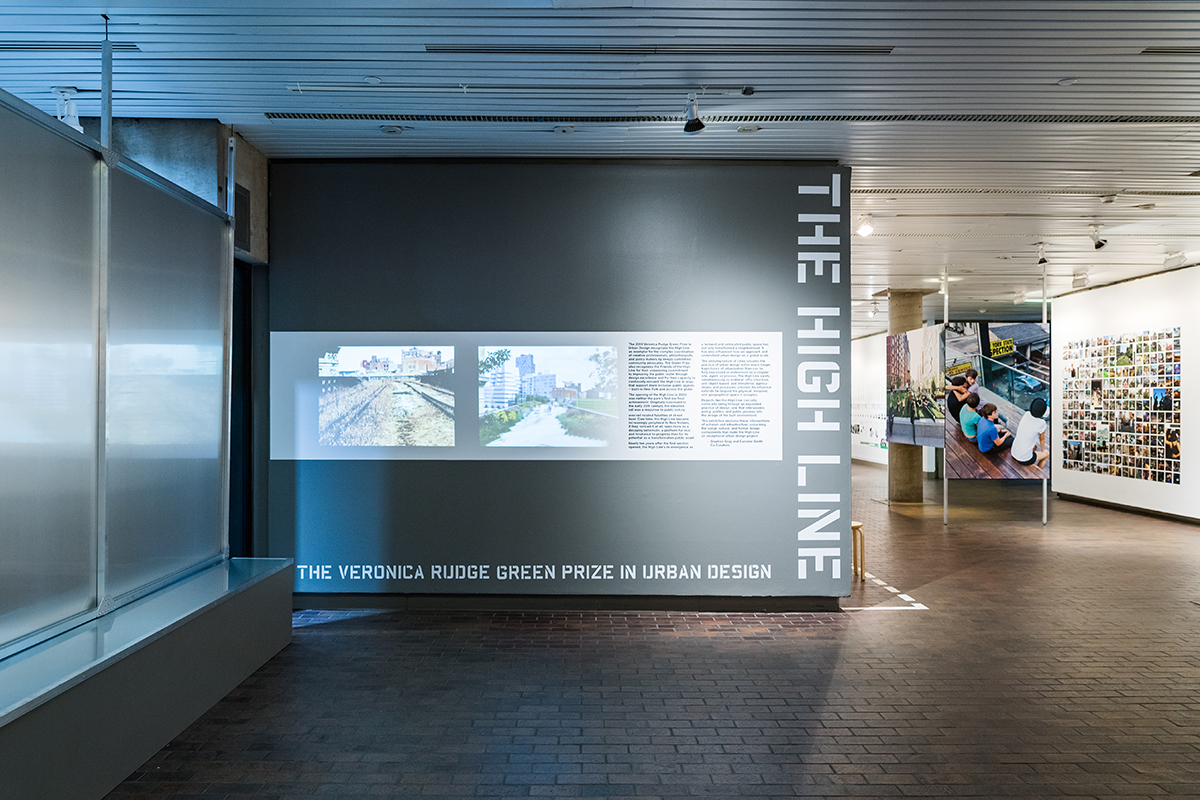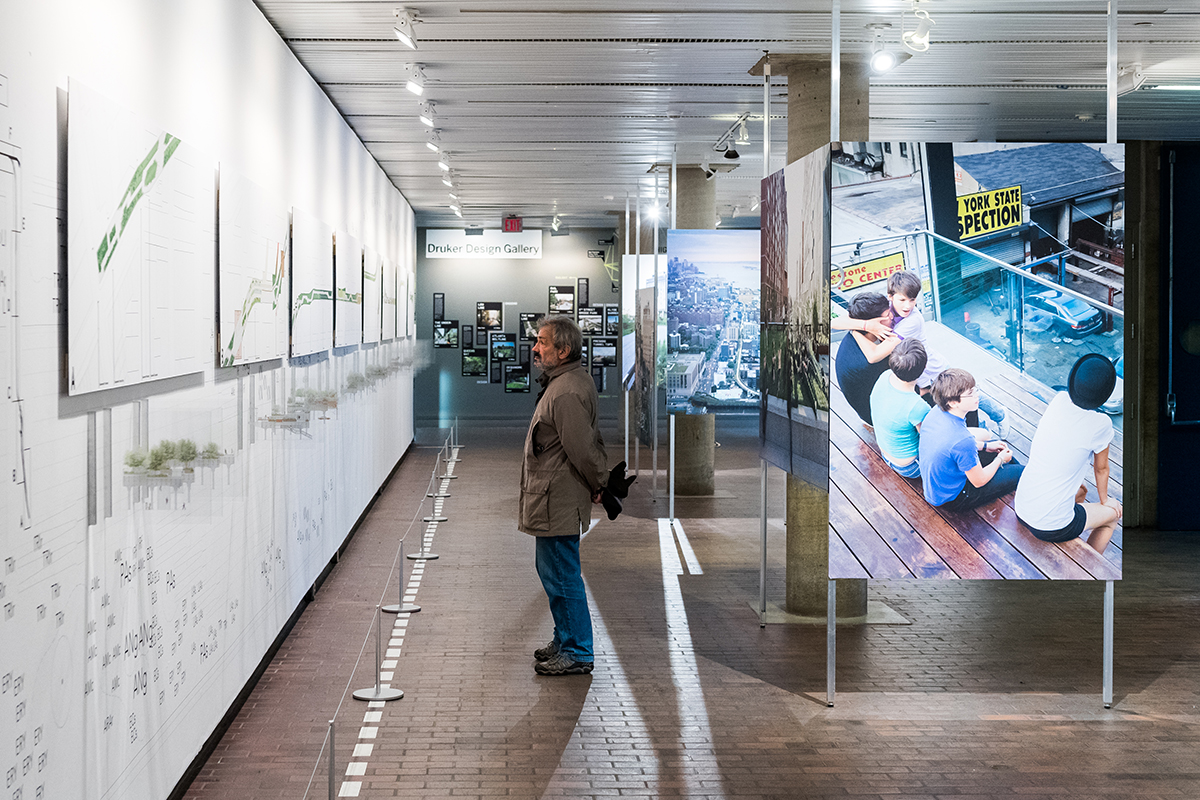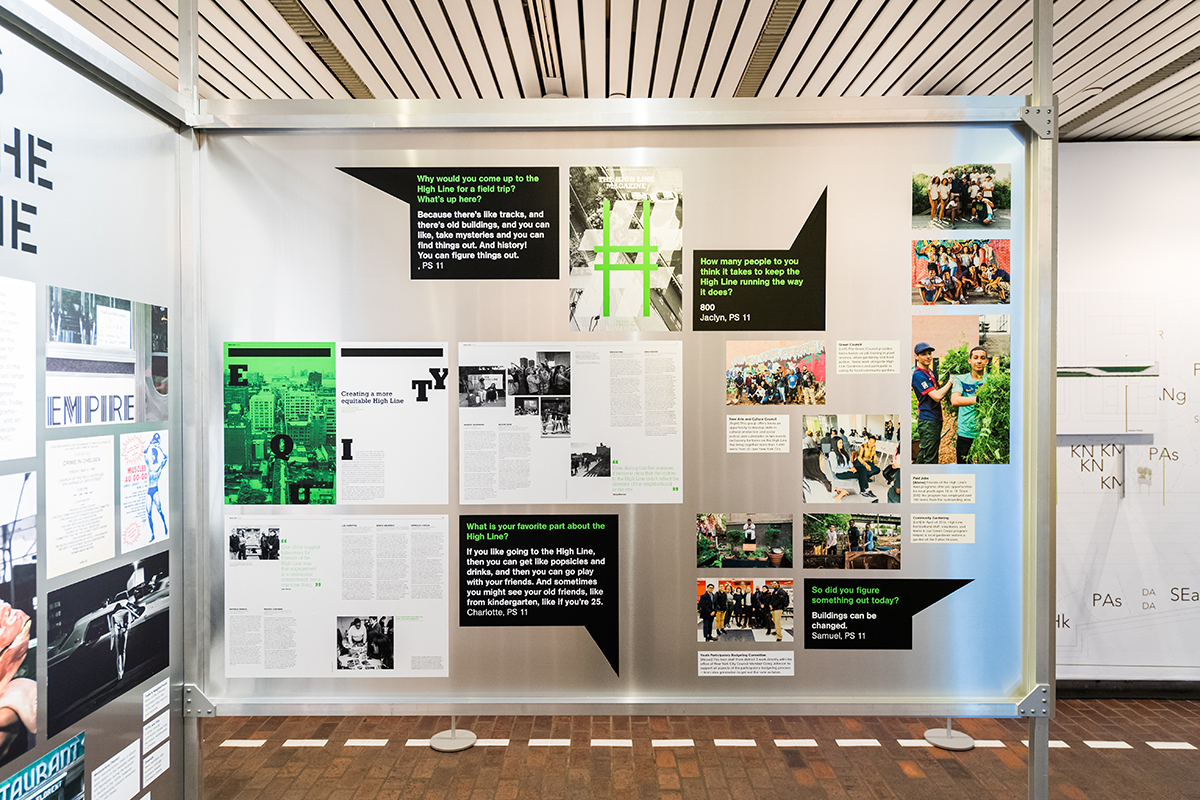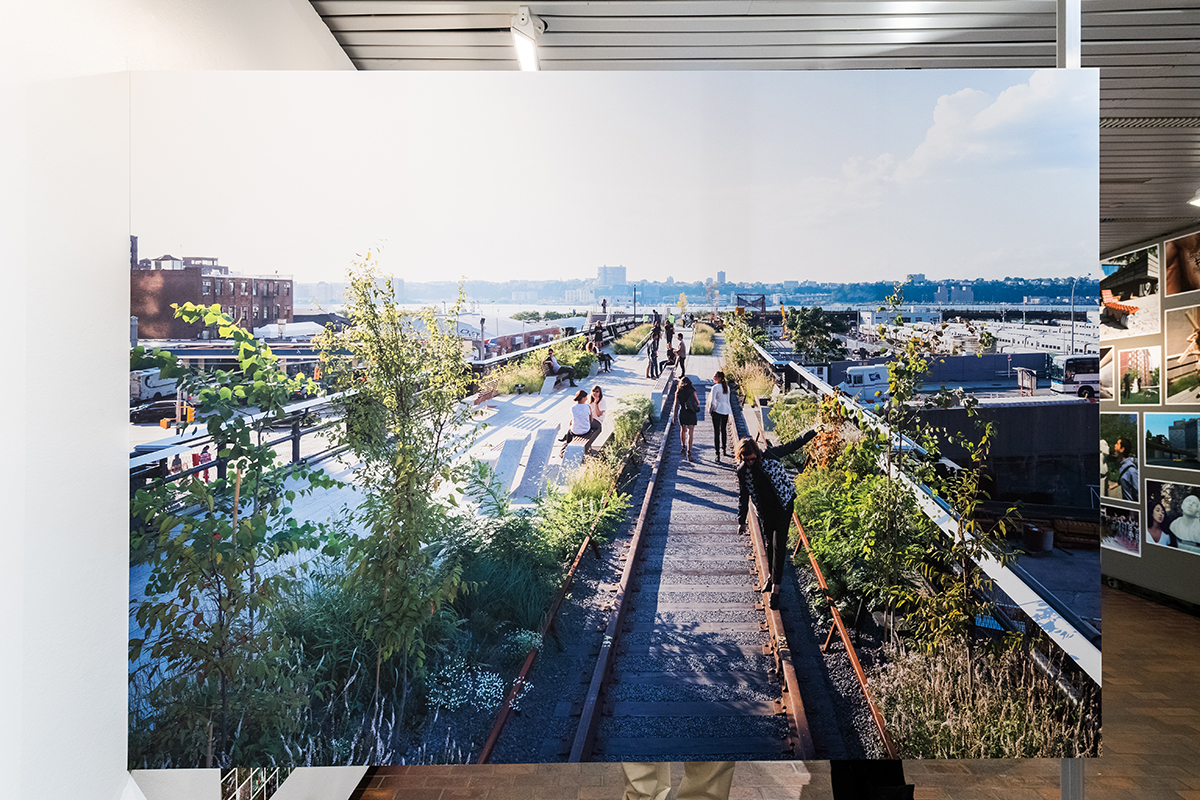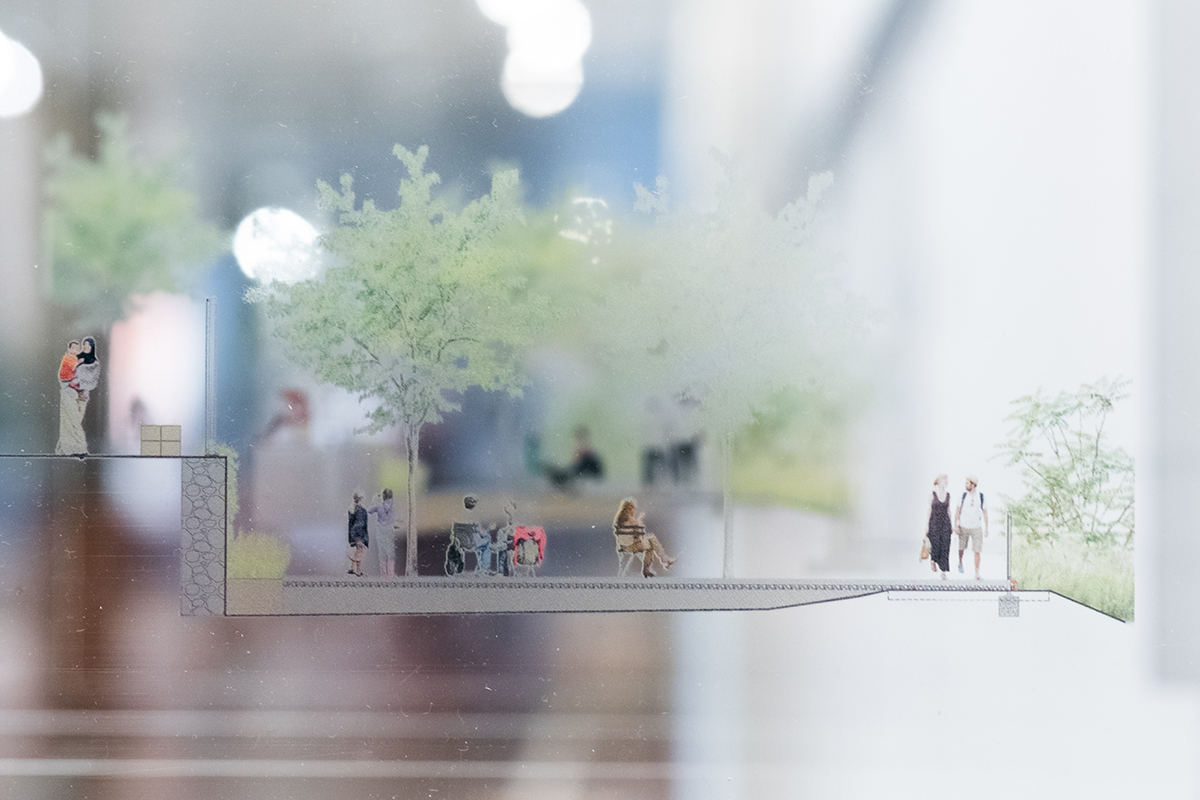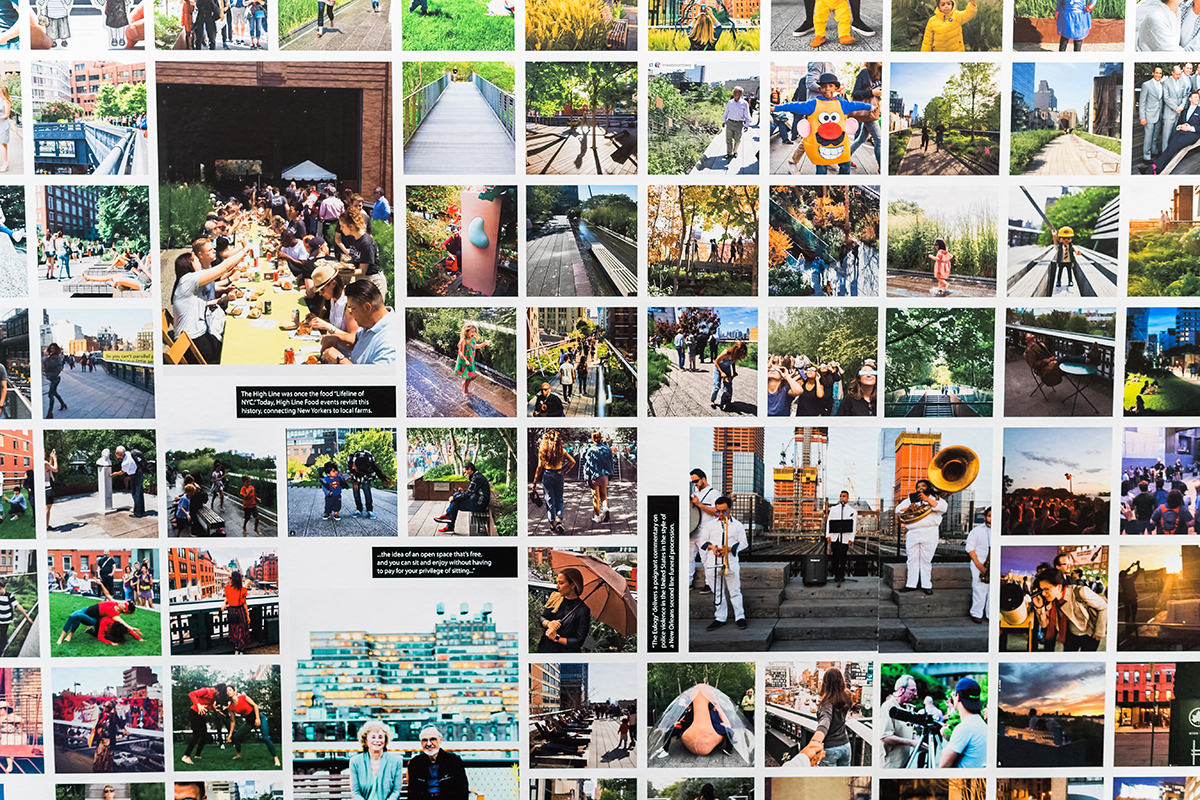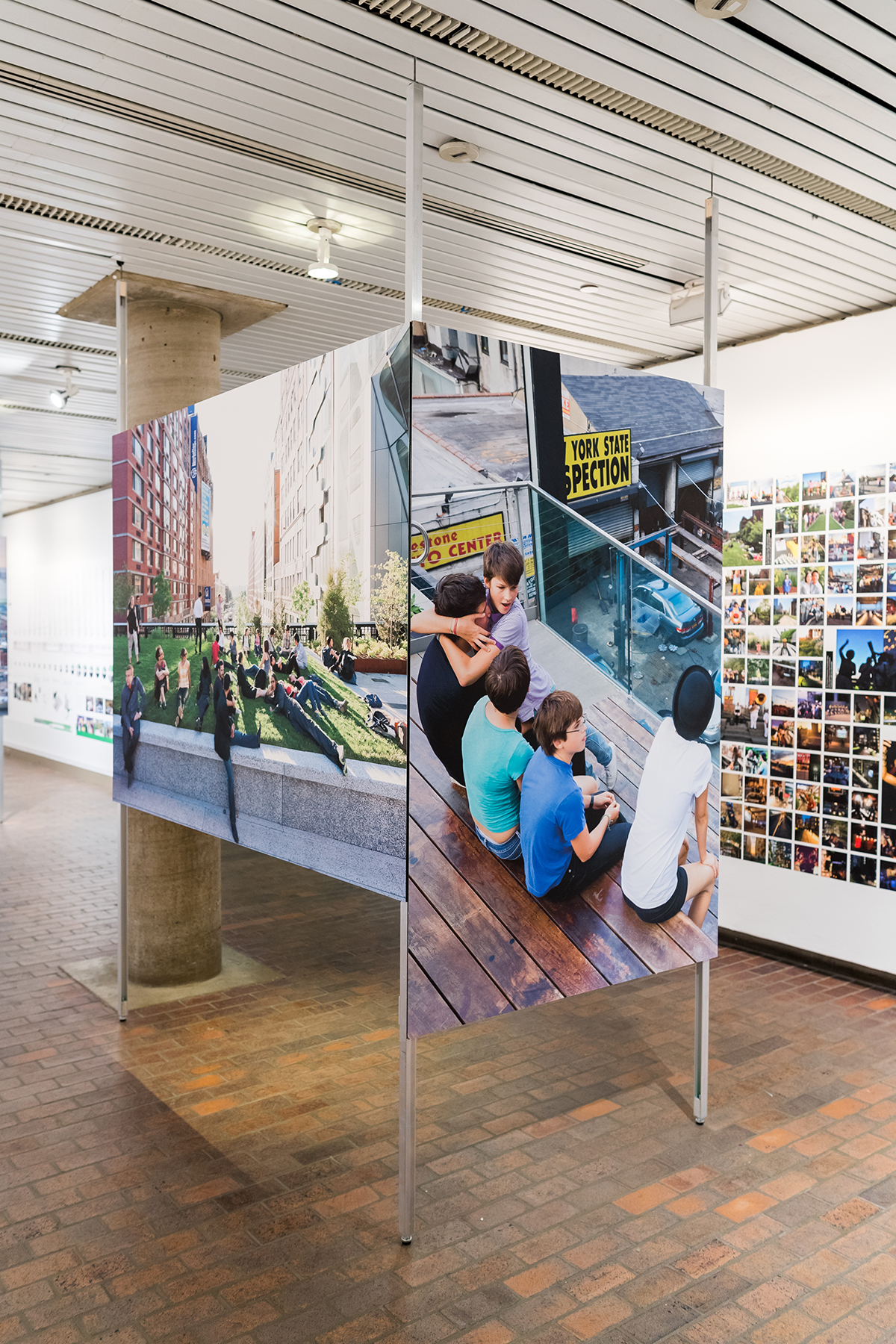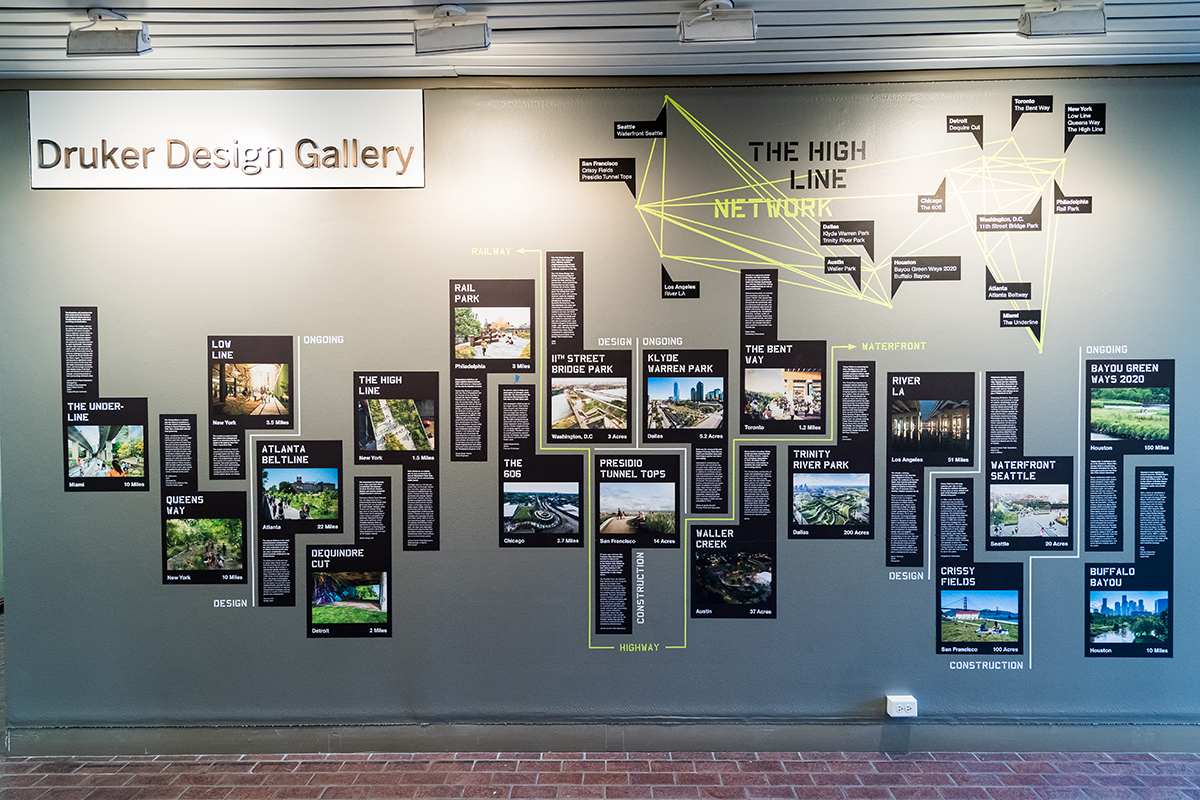Almost a decade after its opening, the High Line made its way to Harvard this fall.
In awarding the High Line the 2017 Veronica Rudge Green Prize in Urban Design, the Harvard Graduate School of Design recognized the linear park on Manhattan’s West Side as an exemplar of urban design, one that “demonstrates a humane and worthwhile direction for the design of urban environments.” To commemorate the project and its Green Prize triumph, the GSD transformed Gund Hall’s Druker Design Gallery into a teaching tool on the history, design, and impact of the now iconic freight-railroad-turned-public-park.
Designed collaboratively by James Corner Field Operations, Diller Scofidio + Renfro, and Piet Oudolf, the High Line opened to the public in three parts between 2009 and 2014; it now hosts over 450 programs and activities and welcomes nearly 8 million visitors each year. Elevated 30 feet above Manhattan’s streets, it offers a floating promenade overlooking New York’s urban culture, and has been hailed as a model of urban regeneration and of collaboration.
Chaired by the GSD’s Chair of Urban Planning and Design Diane E. Davis, the 2017 Green Prize jury elected to grant the $50,000 prize to nonprofit Friends of the High Line, founded in 1999 to advocate for the preservation of the out-of-use railway.
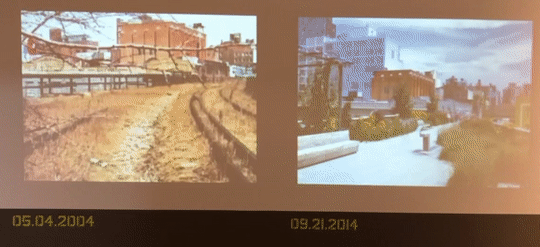
“This year’s selection committee has chosen to recognize the High Line not only for its exceptional design quality, but also because it was a cooperatively-orchestrated, multifaceted endeavor in which citizens, top-tier design professionals, and public authorities worked together to innovate and successfully implement a new archetype for urban design, one that is now being replicated globally,” Davis observed. “The rare alignment of actors, each reaching distinction at the highest professional level, made the High Line both remarkable and worthy of this prize, embodying the best in the field of urban design while also contributing to the collective urban realm.”
Foregrounding the human stories behind the High Line, the GSD’s exhibition illustrates this ethos, and Friends of the High Line emerges as lead character in this tale of urban regeneration. “The High Line represents human collaboration on a truly monumental scale,” said Friends of the High Line co-founder Joshua David at the exhibition’s opening reception.
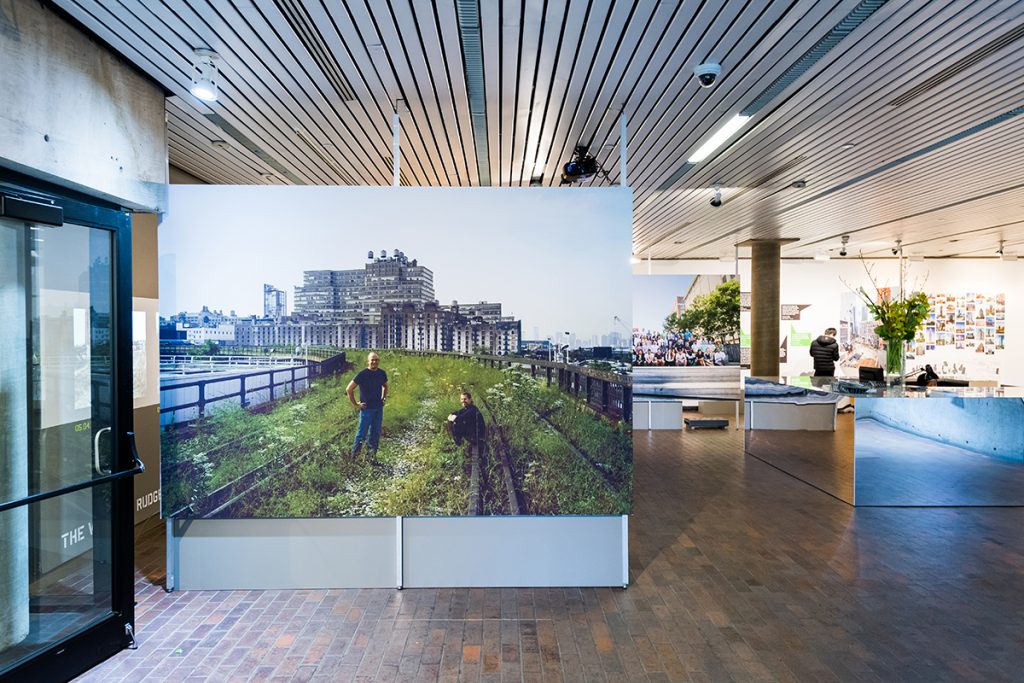
Visitors to the exhibition are first confronted with a large photo depicting Friends founders Joshua David and Robert Hammond knee-high in brush on the High Line in its raw, untamed form, well before top architects from around the world submitted their design proposals. The image was part of year-long project by photographer Joel Sternfeld to document the area. The book that Sternfeld ultimately produced, depicting the majestic beauty of the overgrown, derelict railroad, became an important tool for Friends of the High Line in rallying public support against its proposed demolition by the City of New York.
A few feet behind the opening photo is an image of the Friends of the High Line organization today, represented by its annual staff photo. The two images illustrate almost twenty-years of work, and highlight the hidden human infrastructure behind this new urban experience.
“We really wanted to foreground that the activism came first, a nonprofit structure emerged, funding and political support started to come in, and then an opportunity for design appeared,” says Dan Borelli, director of exhibitions at the GSD.
Exhibition designers applied the concept of billboards—which line the physical park—as a visual device. Throughout the Druker Design Gallery, visitors encounter a series of blown-up photographs by Iwan Baan depicting everyday scenes on the High Line: kids playing, cars whizzing below, office workers relaxing on their lunch break, a secluded bench. Their exaggerated scale immerses viewers into each tableau, and mimics the novel vantage point offered by the High Line’s thirty-foot height. Once-private spaces within neighboring buildings are now on display, traffic passes below, and the overscale graphics of billboards and their massive metal frames are observed at eye level.
“The exhibition invites visitors to move in equally close proximity to thematic billboards, presenting familiar images on the front, and then offering peeks behind industrial scaffolding to reveal the more complicated back stories,” says the GSD’s Stephen Gray, who served on the Green Prize selection committee and who curated the show with doctoral candidate Caroline Filice Smith.
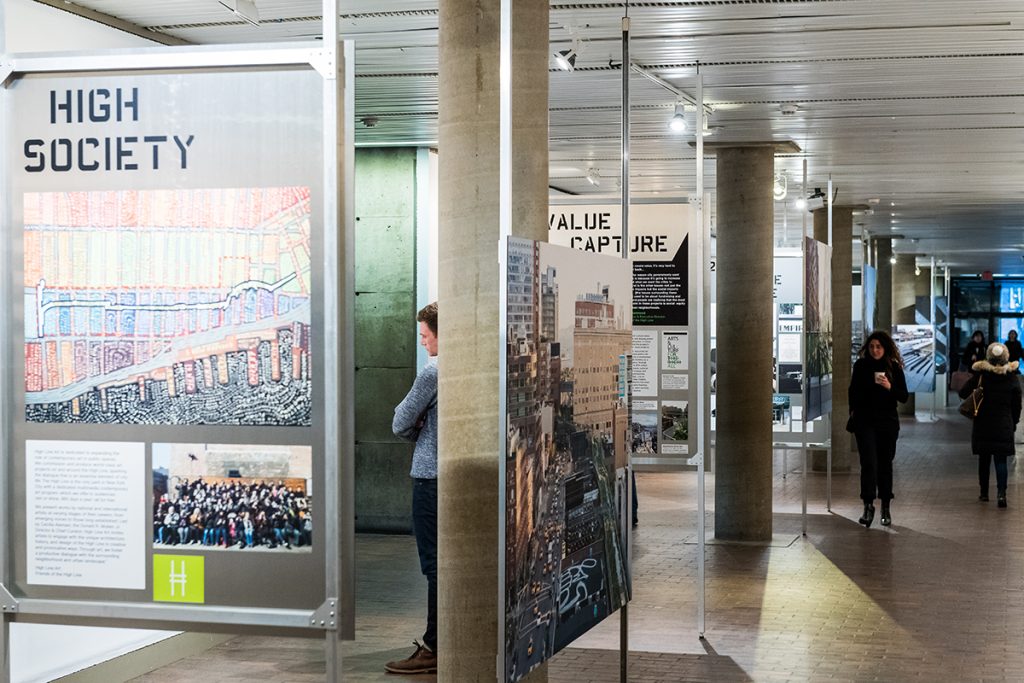
Organized into “micro-climates”—a concept borrowed from the way the High Line organizes its various environmental conditions—the exhibition spaces behind each “billboard” offer opportunities to learn more about specific Green Prize values and themes.
From the main Quincy Street entrance, the section to the left takes up the project’s activist history, and culminates with the High Line Network, a collaborative group that has worked toward creation of other infrastructure reuse projects across the United States.
The section to the right focuses on the physical infrastructure of the High Line. One micro-climate looks at the High Line’s material palette, including its particular varieties of concrete, wood, and steel, recognizable to those who have visited the park itself. The final High Line design document from James Corner Field Operations—a massive printout weighing 50 pounds—is also on view, offering an opportunity for students and other visitors to get into the weeds of the design, so to speak.
“It’s a very generous opening up of process that they understood would be really resonant for our audience,” said Borelli.
This section of the exhibition ends with a look at the 2003 design competition held by Friends of the High Line, and offers a series of fantastical visions for the space designed by leading firms, such as Zaha Hadid Architects.
The project’s final plan is also on display along a wall of the gallery. Perpendicular to the design drawings, the exhibition team chose certain moments from the plan to represent as cut sections on clear print, bringing the technical work to life.
“Watching the High Line pinch in space and then open up in very subtle ways through the sections was pretty exciting,” said Borelli.
Technical considerations aside, the exhibition also evokes the everyday High Line experience.
A series of YouTube videos and photographs of visitors bring moments of levity and humanity to the subject matter, from nudists to newlyweds, street performers to opera singers.
While presenting new information about such a well-known urban design project posed a challenge, the exhibition’s design team was excited to highlight the less-known elements of the park. “The High Line’s obvious, universal success gave it a resiliency that allowed us to step back, look at the past twenty years, and examine the project as a process and not a product,” says exhibition designer Forrest Jessee, who has worked on previous Green Prize exhibitions at the GSD.
While visitors to the Druker Design Gallery exhibition may have their sense of place momentarily suspended when confronted by a project so globally recognized and larger-than-life, the lunch crowd exiting Chauhaus or an architectural model perched on the donut bring us back to reality. But in the context of a learning institution, the exhibition and the High Line itself serve as powerful illustrations of the design disciplines in synthesis and harmony.
“One of the things that we came down to as a jury,” observes selection committee member Charles Waldheim, John E. Irving Professor of Landscape Architecture, “was the sense that, for this design school and the disciplines represented here, we were unaware of any realized urban project over the course of the last decade in which every discipline in this building was both reflected and challenged.”
The GSD hosted two days of events in conjunction with the opening of the exhibition, including:
Opening reception, featuring remarks from Diane Davis (Chair of the Department of Urban Planning and Design, GSD), Stephen Gray (Assistant Professor of Urban Design, GSD), Elizabeth Diller and Ric Scofidio (Diller Scofidio + Renfro), James Corner and Lisa Tziona Switkin (Field Operations), and Robert Hammond and Joshua David (Friends of the High Line).
The High Line: A Debate, featuring panelists John Alschuler, Stephen Gray, Joshua David (Co-Founder, Friends of the High Line), Robert Hammond (Co-Founder, Friends of the High Line) and Belinda Tato and be moderated by Diane Davis.
